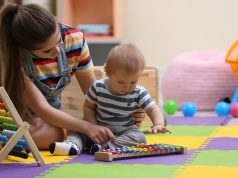Deep learning model based on voice data from crowd-sourced audio samples uses subtle voice changes to detect COVID-19 cases
FRIDAY, Sept. 9, 2022 (HealthDay News) — A deep learning model may help identify COVID-19 patients using voice data, according to a study presented at the European Respiratory Society International Congress 2022, held from Sept. 4 to 6 in Barcelona, Spain. The study was posted on a preprint server online and has not been published in a peer-reviewed journal.
Wafaa Aljbawi, from Maastricht University in the Netherlands, and colleagues developed a deep learning model to identify COVID-19 using voice data from the Cambridge University dataset consisting of 893 audio samples, crowd-sourced from 4,352 participants using a COVID-19 Sounds app. The deep learning classification models included Long-Short Term Memory (LSTM) and Convolutional Neural Network. Their predictive power was compared to that of baseline classification models.
The researchers found that the highest accuracy (89 percent) was achieved with the LSTM based on a Mel-frequency cepstral coefficients feature, which had sensitivity and specificity of 89 and 89 percent, respectively. Compared with results obtained in the state-of-the-art tests, such as the lateral flow test, the results of the proposed model suggest improved prediction accuracy for COVID-19 diagnosis.
“The lateral flow test has a sensitivity of only 56 percent, but a higher specificity rate of 99.5 percent,” Aljbawi said in a statement. “This is important as it signifies that the lateral flow test is misclassifying infected people as COVID-19 negative more often than our test.”
Abstract No. OA1626
Copyright © 2022 HealthDay. All rights reserved.








